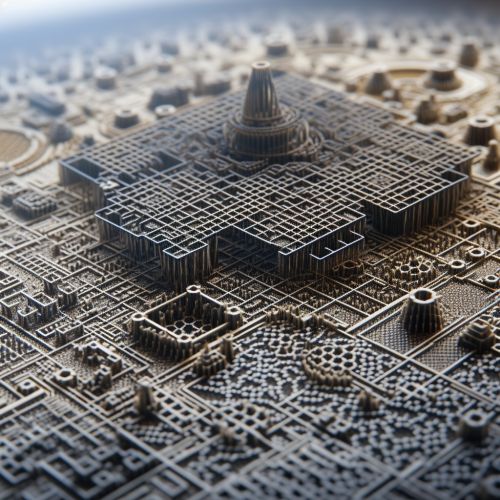The Role of Microscale Patterning in Tissue Engineering
Introduction
Microscale patterning is a key concept in the field of tissue engineering, a multidisciplinary field that aims to develop functional tissues and organs. It involves the use of various techniques to create patterns at the microscale level, which can influence the behavior of cells and tissues. This article will delve into the role of microscale patterning in tissue engineering, providing a comprehensive and detailed exploration of the subject.


Microscale Patterning: An Overview
Microscale patterning refers to the creation of patterns or structures at the microscale level, typically in the range of 1 to 100 micrometers. These patterns can be created on a variety of materials, including polymers, metals, and ceramics, using techniques such as photolithography, microcontact printing, and electron beam lithography. The resulting patterns can influence the behavior of cells, including their adhesion, proliferation, migration, and differentiation.
Role in Tissue Engineering
In tissue engineering, microscale patterning is used to guide the growth and organization of cells, with the aim of creating functional tissues and organs. This is achieved by creating patterns that mimic the natural microenvironment of cells, also known as the extracellular matrix. By providing cells with a more natural environment, it is possible to influence their behavior in a controlled manner, leading to the formation of tissues that closely resemble their natural counterparts.
Influence on Cell Behavior
Microscale patterning can influence a variety of cell behaviors, including adhesion, proliferation, migration, and differentiation. For example, patterns can be designed to promote the adhesion of certain types of cells, while discouraging the adhesion of others. This can be useful in applications such as the creation of skin grafts, where it is desirable to promote the growth of skin cells while discouraging the growth of other types of cells.
Creation of Complex Tissues
Through the use of microscale patterning, it is possible to create complex tissues with multiple types of cells. This is achieved by creating patterns that guide the growth and organization of different types of cells in a controlled manner. For example, in the creation of a blood vessel, patterns can be used to guide the growth of endothelial cells (which form the inner lining of the vessel) and smooth muscle cells (which form the outer layer of the vessel).
Improvement of Tissue Function
Microscale patterning can also improve the function of engineered tissues. For example, in the case of engineered heart tissue, patterns can be used to guide the alignment of cardiac cells, leading to the formation of tissues that more closely resemble the natural structure of heart tissue. This can improve the function of the tissue, as the alignment of cells can influence the contractile properties of the tissue.
Techniques for Microscale Patterning
There are several techniques that can be used to create microscale patterns, including photolithography, microcontact printing, and electron beam lithography. Each of these techniques has its own advantages and disadvantages, and the choice of technique can depend on factors such as the type of material being patterned, the desired pattern size and complexity, and the intended application of the patterned material.
Photolithography
Photolithography is a technique that involves the use of light to create patterns. It is commonly used in the semiconductor industry, but has also found applications in tissue engineering. The process involves the use of a photosensitive material, which is exposed to light through a mask. The exposed areas of the material undergo a chemical reaction, allowing them to be removed to reveal the underlying pattern.
Microcontact Printing
Microcontact printing is a technique that involves the use of a stamp to create patterns. The stamp is coated with a material (such as a protein or a polymer), and is then pressed onto a substrate to transfer the material in the shape of the pattern. This technique is particularly useful for creating patterns of biological molecules, which can influence the behavior of cells.
Electron Beam Lithography
Electron beam lithography is a technique that involves the use of a focused beam of electrons to create patterns. This technique allows for the creation of very small and complex patterns, but is more time-consuming and expensive than other techniques.
Future Directions
The field of microscale patterning in tissue engineering is continually evolving, with new techniques and applications being developed. Future directions for the field could include the development of new patterning techniques, the creation of more complex and functional tissues, and the application of microscale patterning in the creation of organ-on-a-chip systems.
